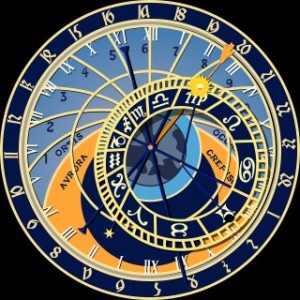aAbout this article?
This article covers various kinds of divisional charts in detail. It talks about the Brihat Parashar Hora shastra scheme of 16 divisional or varga charts.
also the other schemes of Varga charts like 7 or 8 or say 10 charts considerations.
The article discusses categorization of various kinds of health status of planets in any Horoscope based on placement and strength in Varga charts like Gopuramsha or simhamsha suggesting planet strong in 5 divisional horoscope etc .
It also looks at the basic roles and function of 16 varga or divisional charts in any Horoscope.
How to calculate the varga or divisional charts is given. so also how to interpret them is also given in the article. so again how to use varga or divisional chart for past life or purva janam karma predictions is also given in this article.
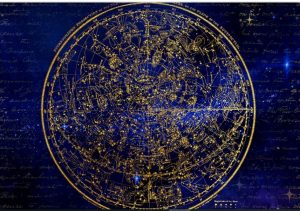
what is a varga or Divisional chart or Horoscope in Vedic astrology?

In summary
as as we can see In Vedic astrology, varga charts are extremely useful instruments since they enable in-depth and complex readings of several life aspects.
They aid astrologers in refining forecasts, comprehending more profound karmic influences, and offering superior advice in particular areas such as wealth, marriage, career, and health.
A thorough understanding of Varga chart interpretation is necessary to make insightful and accurate astrological predictions.
Like for example for marriage we have the d9 chart for further details. so also for career we have d10 chart and for past life or Purva janma we have the d60 chart. so these charts work independently mostly and not only help to cross check or value add the results that you get in the d1 chart. but for sure value add to the same.
Now varga means a division, so a sign is divided to get the varga chart.
so when the sign is divided into sub parts the fractional part is called the amsha.
Like d9 is navamsha and d10 is dashamsha chart.
There are basically 16 varga charts to know the subtler kind of energies flowing through planets.
so if say a planet is benefic in d1 or lagan chart but could not be benefic say in the d2 or money or wealth related chart.
So also There two kinds of varga or divisional charts.
I) the six-fold divisions of the sign or the rashi like the hora or d2, the drekkana or d3 or decanate , the navamsha the d9 , the d12 or dwadashamsha and also the trimamsha.
II) the other is the saptavarga, sapta means 7 or sapta varga
III) then there are 10-fold division divisions as well.
IV) also 16 folds division as given in brihat Parashar Hora shastra
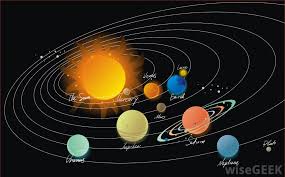
how is the status of planet determined in any Horoscope or Kundli?
So if planets is strong in d1 or lagan and is strong in any two of the 16 divisional charts it is called in Parjijatamsha state or Bhedakamsha.
when strong in 3 divisional charts it is called the Uttamamsa or Kusumamsa or Vyanjanamsa state.
when the planet is strong in four divisional or Varga charts – it is said to be in Gopuramsa and also Naagpushpamsa and also Kimshukamsa and also Chaamaramsa.
if a planet is strong or blessed in 5 varga or divisional charts it is called the Simhasanamsa(Kindly note Leo is 5th sign so number 5 here suggested simhananamsa) and also Kundakamsa and also Chhatramsa.
if the planet is strong in six varga charts – it is called the Parvatamsa and also Keralamsa or one may call it as Kundalamsa.
For planet to be strong on the seven varga charts – it is called the Devalokamsa and also Kalpavrkshamsa and also Mukatamsa.
If the planet is strong in eight varga charts – then it is called the Kumkumamsa and also Brahmalokamsa and also Chandanvanamsa.
If the planet is strong in nine varga charts – it is called the Iravatamsa also Poornachandramsa.
If planet is strong in ten varga or divisional charts –it is called the Vyshnavamsa and also Shridham also Ucchaishrvamsa.
If planet is strong in eleven varga or divisional charts –it is called the Saivamsa or also the Dhanvantriamsa.
If a planet is strong in twelve varga charts – it is called the Bhaswadamsa also Suryakantamsa.
If the planet is strong in thirteen Varga or divisional charts –it is called the Vaisheshikamsa also Vidrumamsa.
If planet is strong in fourteen varga or divisional charts – then it is called the Indrasanamsa.
If the planet happens to be strong in fifteen varga charts – then it is called the Golokamsa.
if the planet is strong in sixteen Varga charts – it is then called the Shrivallabhamsha.

what are various kinds of Vargas or Divisional charts and what areas of Life do they cover?
Varga Chart Areas of life
Rasi d1 self or body or material matters or comforts
Hora d2 wealth flows and family
Drekkana d3 initiative and siblings
Chaturthamsha d4 property, fame, and fortune
Saptamsha d7 Children and also Progeny considerations
Navamsha (astrology) d9 religion, dharma, spouse, or life partner
Dashamsha 10 d10 Actions , karma, or profession
Dwadashamsha d12 Legacies , grandfather, and mother and yes parents
Shodasamsha d16 comfort, luxury, and vehicles
Vimshamsha d20 spiritual quest and way of living
ChaturVimsamsha d24 Learning ability, education, Qualifications
SaptaVimshamsha d27 plus and minus points of a person or strength and weakness of personality
Trimsamsha d30 The negatives and evils
KhaVedamsha d40 what are the good and bad effects of any Horoscope
AkshaVedamsha d45 Over all general character and way of behaving of person
Shastiamsha d60 It works like d1 chart, but also indicates about past life
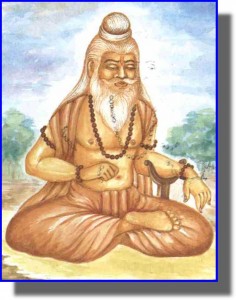
The Varga or Divisional charts of Jaimini vedic Astrology ?
Varga Chart Area of Life it works
Panchamsa d5 The ability to counsel and fame one gets and power
Shasthamsa d6 health and obstacles
Ashtamsa d8 Unexpected matters coming up
EkaDasamsa or Rudramsa d11 destruction and negatives of life
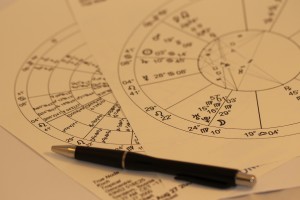
Categories of Divisional horoscopes or Varga Birth Charts
We have classified the division of sign into various division or Vargas in previous lessons. The total or effective result of the classification are given below.
Shad Varg
Sapth Varg
Dasha Varg
and Shodasha Varg.
There are 4 kinds of divisional charts Or Vargas classification related to divisions of the sign for a given Divisional Horoscope.
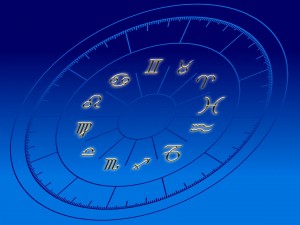
The Significance and Objective of Varga Charts
Varga charts offer a more in-depth comprehension of particular aspects of a person’s life.
For instance, whereas the D1 chart can depict the overall state of a person’s marriage, the D9 (Navamsa chart) offers a comprehensive image of the real state of their marriage and how it changes over time.
Comparably, if a person’s job prospects appear difficult based on their D1 chart, consulting their D10 (Dashamsa chart) can shed more light on their chances, challenges, and professional abilities.

Main Usages for varga charts in details
One of the most important divisional charts is the D9 (Navamsa chart), which clarifies the birth chart’s findings and provides information on relationships, marriage, and spiritual development.
It is believed to carry half the significance of the primary Rashi chart and ought to be carefully scrutinized while assessing marital harmony and the results of relationships.
d9 or navamsha is considered as a parallel chart to d1. so if any event or matter is well indicated both in d1 and d9, it is bound to happen. Infact Moon chart and d1 are complementary to each other. but d1 adds value. so also it is a chart is studied for the life partner.
The Dashamsa chart, or D10, is essential for comprehending how one succeeds in life and how one’s career grows, reputation, and obstacles arise in the workplace.
For career details and initiative this d10 chart is studied.
The Native American’s life will be influenced by their descendants, according to the Saptamsa chart D7.
for children and offspring apart from the d1 chart 5th house the d7 chart lagna, and Yoga’s are also studies. so also position of 5th house lord in d5 is also looked into.
Additionally, it aids in forecasting the likelihood of having children and the caliber of a couple’s relationship.
The native’s financial security, wealth accumulation, and prosperity are examined in detail in the D2 (Hora chart).
wealth and family matters to fair extant home form 2nd house and so also especially for wealth d2 is looked at.
The Dwadashamsa chart, or D12, provides in-depth information about how parents shaped a native’s life and how they affected several facets of personal growth.
d12 is also the key to grandparents and so also parent’s karma etc.

What is the calculation Methods for Various varga charts?
Based on the divisional chart that is being generated, each Varga chart is calculated by splitting the 30-degree span of each sign of the zodiac into equal segments.
As an illustration:
Navamsa (D9): Every sign has nine sections, each of which covers 3°20′.
The Navamsa chart is made using the positions of the planets within these divisions.
Dashamsa (D10): There are ten equal pieces that make up the 30-degree zodiac sign.
The career and public image of the native are highlighted in this chart.
Kindly note that 10 is a number of new cycle and initiative. so also 10th house in d1 is primarily for career.
Saptamsa (D7): The zodiac’s seven divisions stand for procreation and the development of families.
kindly note 7 is the sign number of Libra or sex and procreation.
Shashtiamsa (D60): This system divides each sign of the zodiac into 60 segments, each measuring 0°30′.
It offers profound understanding of hidden effects and past life karma.
In d60 generally the 12th house lord or the 9th house lord of 5th house lord of d1 are studied better.

How to Interpret Varga Charts ?
When deciphering divisional charts, astrologers consider:
Positions of planets on the Varga charts:
The strength or weakness of a planet in a given Varga chart provides information about the native’s luck in that particular area of life.
For example, a well-placed Jupiter in the D10 chart represents career progress and expansion.
a well placed Saturn in d10 could mean stable career at least even if other aspects are not stable.
Divisional chart Lagna or Ascendant:
In every divisional chart, the Lagna signifies the self within that particular domain.
For example, the native’s perspective on marriage and relationships will be explained by the D9 Lagna.
so also 7th house of d9 will give more marriage related information

Karmic Roots of the Shashtiamsa (D60) Chart
Among the divisional charts, the D60 chart has the most specific and in-depth information.
It is frequently used to comprehend the karmic past and the hidden forces influencing the present life.
It divides each sign into 60 parts, each representing a half-degree.
d60 is studied beyond the d1 charts 5th, 9th and 12th house to know the effects of past life karma. so say for example rahu the planet of moha or connection is in the 4th house in d60. this means the person was deep into connection to the family in past life reincarnation.
It provides understanding of why specific events transpire in a particular way, frequently linked to past life experiences or unresolved karma.
Astrologers believe that this chart is essential for adjusting forecasts and comprehending more profound spiritual lessons and difficulties.
The connection of each lord of d1 chart could be found with the past life in d60. Like the 5th house presence in the d60 tells about the children connection to purva janama karma.
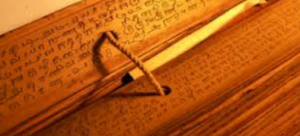












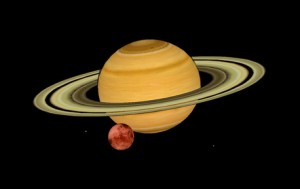
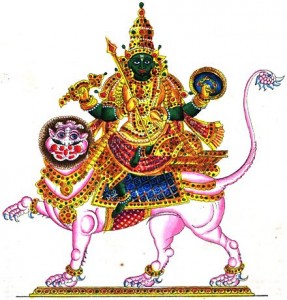


 Your Horoscope OR Kundali FREE-Includes Personality,Career,Love,Longevity etc Predictions! CLICK HERE
Your Horoscope OR Kundali FREE-Includes Personality,Career,Love,Longevity etc Predictions! CLICK HERE 



